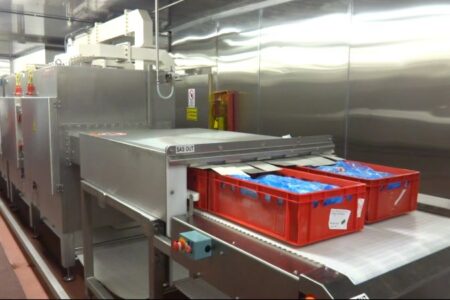The historic Andes food storage techniques fuelling modern day demands

A food storage technique over 700 years old is at the heart of the way we continue to process world’s favourite foods, build safe medicines and prepare for emergencies. As the technology faces a resurgence due to global warming and changing diets, why don’t we know more about freeze drying? Diana Morris from European Freeze Dry explores its history and bright future.
Food processing techniques are generally thought of as new modern methods to ensure food lasts longer, producing higher yields and providing additional nutrients. For most food processors, including European Freeze Dry, these techniques take place using modern equipment with highly detailed monitoring and testing facilities.
However, for freeze drying, its roots go back hundreds of years, before the age of high-tech systems or climate-controlled logistics. The technique traces back to the Incan Empire in the foothills of the Andes, where the potatoes which grew in the harsh climate were too bitter to eat fresh and didn’t store well for the long journey back to settlements.
By learning to expose the potatoes to the freezing overnight temperatures and drying them out during sunlight hours, the result was a dehydrated, more palatable potato which the Incans could transport and store ready for consumption for years. The final product, called chuño, can still be found in traditional meals around Peru and Bolivia to this day.
Today, coffee is the most well-known freeze dried product but the list of consumables which benefit from the technique to seal in flavours and increase their longevity is almost endless.
Modern technology has allowed for much greater precision in applied temperatures, greatly increasing the variety of products which can benefit from the technique and extending the benefits to pharmaceutical and nutraceutical products.
Technology retains structure, taste and nutritional value
In our freeze drying facilities in Preston, UK and Kirke Hyllinge, Denmark, we process hundreds of tonnes of freeze dried ingredients every year, from meat and fruit products, through to seasonings, ready meals and healthcare products.
Freeze dried products start with a frozen item, which is then loaded into a pressured chamber with a vacuum applied. Under the vacuumed conditions, neither ice or water can exist and when a gentle controlled heat is applied the water leaves each item in a vapour trail which is then captured on an ice condenser at the rear of the chamber.
The process takes approximately 24 hours, carried out in a set of ‘chambers’ which can be controlled at various temperatures and time schedules depending on specific product requirements. Using modern monitoring methods, we can track the variety of heat and time needed which varies from a structure heavy item such as chicken and beef to soft fruits such as strawberries.
The result is a freeze dried product with all the water content removed, whilst retaining the look, structure, taste and nutritional value of the original. The items can then simply be rehydrated with water, sauces or any wet ingredient. In addition, the final product can also be milled or compacted into powders and tablets.
With virtually zero water content in the final processed product, freeze dried ingredients benefit from greater longevity at ambient temperatures. For some products, that can mean a shelf life of up to 25 years and potentially longer, without the need to add any artificial preservatives or additives.
Freeze drying moves beyond food to pharma
Indeed, boundaries are continuing to be pushed when it comes to freeze drying and how the technology can be applied to pharma and nutraceutical products.
First used as a method to maintain the viability and life of vital drugs such as penicillin during the Second World War, freeze drying can also offer great benefits in stabilising pharmaceutical and nutraceutical products.
Advantages of freeze drying also include the much-reduced potential for micro-organisms existing in such low amounts of water, ensuring that nutraceuticals can stay safe to consume over an extended time period.
We are constantly breaking new ground with our customers and bringing new ideas and products to market to support special dietary requirements and how the natural qualities of certain foods can provide health benefits, from adding a nutritional supplement to a diet, through to targeting more specific benefits such as aiding weight loss or cancer prevention.
Reliable food chains for an uncertain world
As our lives and diets change, the popularity of freeze dried products continues to grow with some investment analysts estimating a Compound Annual Growth Rate for the industry of up to eight per cent by 2026.
While freeze dried meals offer a nutritious meal which can be instantly rehydrated, the possibilities of the technology also allow for long-life products which can distributed and ready to eat in hostile environments, such as those threatened ever more so by climate change, disasters or famine.
As citizens prepare for a less certain food chain due to floods, fire and emergencies, more people are turning to a reliable food backup should the shelves run empty or in more drastic situations people find themselves isolated from food options.
Similarly, as we place an additional focus on the public health of our global society, a greater rise in natural medicines will rely on the rise of preventative and treatment healthcare products that have long life viability.
The Incas were undoubtedly ahead of their time, but not even they could have predicted the impact their potatoes would have on our modern world.
For more information around European Freeze Dry and freeze dried ingredients, visit: www.europeanfreezedry.com



